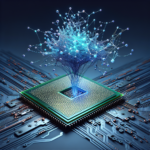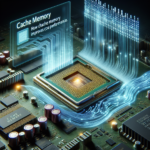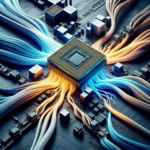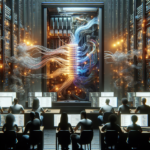Explaining the Relationship Between CPU and Artificial Neural Networks

Explaining the Relationship Between CPU and Artificial Neural Networks
Artificial Neural Networks (ANNs) have become a cornerstone of modern artificial intelligence (AI) and machine learning (ML). These complex systems are designed to mimic the human brain’s neural networks, enabling machines to learn from data and make intelligent decisions. However, the performance of ANNs is heavily dependent on the underlying hardware, particularly the Central Processing Unit (CPU). This article delves into the intricate relationship between CPUs and ANNs, exploring how they interact, the challenges involved, and the future of this dynamic duo.
Understanding Artificial Neural Networks
What Are Artificial Neural Networks?
Artificial Neural Networks are computational models inspired by the human brain’s structure and function. They consist of interconnected nodes, or “neurons,” organized into layers. These layers include an input layer, one or more hidden layers, and an output layer. Each neuron processes input data and passes the result to the next layer, enabling the network to learn and make predictions.
How Do ANNs Work?
ANNs operate through a process called “training,” where they learn to recognize patterns in data. This involves adjusting the weights of the connections between neurons based on the error in the network’s predictions. The goal is to minimize this error, thereby improving the network’s accuracy. Training typically requires large datasets and significant computational power.
The Role of CPUs in ANNs
What Is a CPU?
The Central Processing Unit (CPU) is the primary component of a computer responsible for executing instructions. It performs basic arithmetic, logic, control, and input/output (I/O) operations specified by the instructions in a program. CPUs are designed to handle a wide range of tasks, making them versatile but not always the most efficient for specialized computations like those required by ANNs.
How Do CPUs Support ANNs?
CPUs play a crucial role in the development and deployment of ANNs. They are responsible for:
- Data Preprocessing: Before training an ANN, data must be cleaned, normalized, and transformed. CPUs handle these preprocessing tasks efficiently.
- Training: While GPUs (Graphics Processing Units) are often preferred for training due to their parallel processing capabilities, CPUs are still used, especially for smaller datasets or less complex models.
- Inference: Once an ANN is trained, it can be used to make predictions on new data. CPUs are commonly used for inference in real-time applications due to their low latency.
Challenges in Using CPUs for ANNs
Computational Complexity
Training ANNs is computationally intensive, requiring significant processing power and memory. CPUs, with their limited number of cores and lower parallel processing capabilities compared to GPUs, can struggle with the demands of large-scale neural networks.
Energy Consumption
CPUs are not as energy-efficient as specialized hardware like GPUs or TPUs (Tensor Processing Units). Training large ANNs on CPUs can lead to high energy consumption and increased operational costs.
Scalability
As the size and complexity of ANNs grow, the limitations of CPUs become more apparent. Scaling up neural networks on CPUs can be challenging, often requiring distributed computing solutions to manage the workload.
Optimizing CPU Performance for ANNs
Parallel Processing
Modern CPUs come with multiple cores, allowing for parallel processing. By leveraging multi-threading and parallel computing techniques, the performance of CPUs in training and inference tasks can be significantly improved.
Algorithm Optimization
Optimizing the algorithms used in ANNs can also enhance CPU performance. Techniques such as quantization, pruning, and knowledge distillation can reduce the computational load, making it easier for CPUs to handle complex models.
Hybrid Systems
Combining CPUs with other specialized hardware like GPUs or TPUs can offer the best of both worlds. CPUs can handle data preprocessing and control tasks, while GPUs or TPUs can manage the heavy lifting of training and inference.
Future Trends
Advancements in CPU Architecture
Future CPUs are expected to feature more cores, higher clock speeds, and improved energy efficiency. These advancements will make CPUs more capable of handling the demands of ANNs, reducing the need for specialized hardware.
Integration with AI Accelerators
CPUs are increasingly being integrated with AI accelerators, specialized hardware designed to accelerate AI workloads. This integration will enhance the performance of CPUs in ANN tasks, making them more competitive with GPUs and TPUs.
Software Innovations
Ongoing developments in software frameworks and libraries will also play a crucial role. Optimized libraries for CPU-based neural network training and inference will make it easier to leverage the full potential of modern CPUs.
FAQ
Can CPUs be used for training large-scale ANNs?
While CPUs can be used for training large-scale ANNs, they are generally less efficient than GPUs or TPUs. CPUs are better suited for smaller datasets or less complex models. For large-scale training, GPUs or TPUs are recommended due to their superior parallel processing capabilities.
Are CPUs suitable for real-time inference?
Yes, CPUs are well-suited for real-time inference due to their low latency. They can handle the computational demands of making predictions on new data quickly, making them ideal for applications that require real-time decision-making.
How can I optimize CPU performance for ANNs?
Optimizing CPU performance for ANNs can be achieved through parallel processing, algorithm optimization, and hybrid systems. Leveraging multi-threading, optimizing algorithms, and combining CPUs with specialized hardware like GPUs or TPUs can significantly enhance performance.
What are the future trends in CPU development for ANNs?
Future trends in CPU development for ANNs include advancements in CPU architecture, integration with AI accelerators, and software innovations. These developments will make CPUs more capable of handling the demands of ANNs, reducing the need for specialized hardware.
Conclusion
The relationship between CPUs and Artificial Neural Networks is complex and multifaceted. While CPUs play a crucial role in data preprocessing, training, and inference, they face challenges in handling the computational demands of large-scale ANNs. However, through advancements in CPU architecture, algorithm optimization, and hybrid systems, the performance of CPUs in ANN tasks can be significantly enhanced. As technology continues to evolve, the synergy between CPUs and ANNs will only grow stronger, paving the way for more efficient and powerful AI systems.




